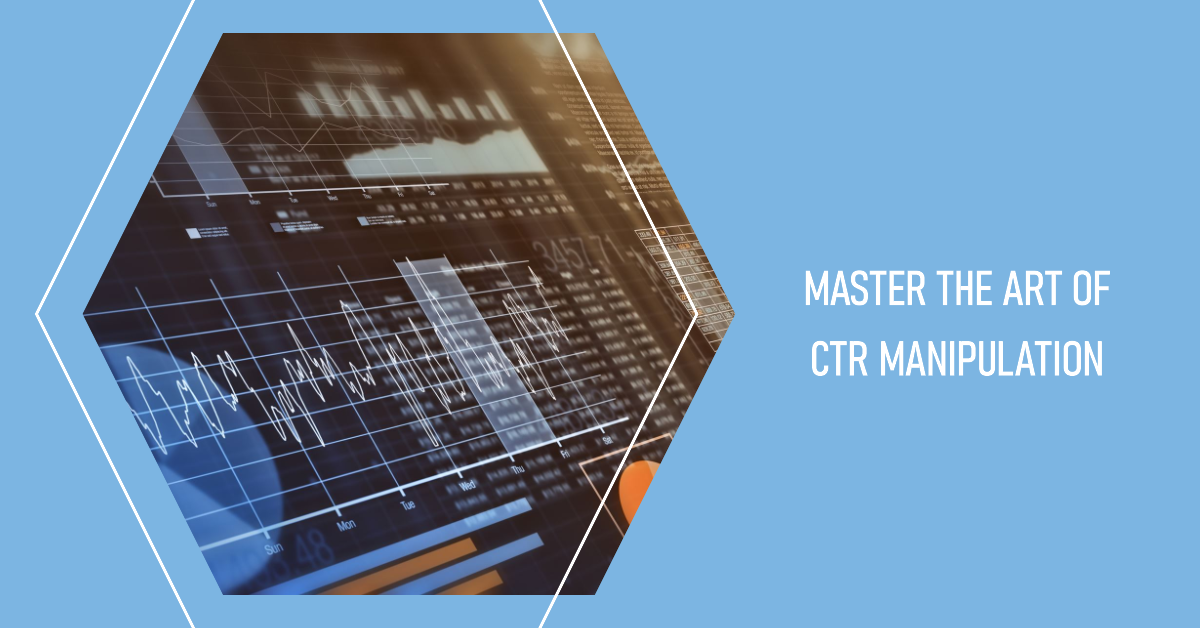CTR Manipulation: A Game Changer for Digital Campaigns
The increase of CTR control has without a doubt transformed electronic advertising and marketing methods, supplying marketing experts with devices to enhance involvement and drive web traffic efficiently. Techniques such as A/B testing and personalized content have actually proven to produce substantial enhancements in click-through rates. Nonetheless, as brand names progressively leverage these approaches, the honest implications of such techniques call for examination. Balancing the search of optimized metrics with the demand for authentic audience links positions an essential difficulty for marketing professionals today. What implications might this stabilizing act hold for the future of digital campaigns?
Recognizing CTR Adjustment
Although click-through rate (CTR) manipulation might appear like an uncomplicated technique in digital advertising, it includes a variety of approaches focused on artificially pumping up involvement metrics. This manipulation can take various forms, consisting of the use of click farms, robots, or deceitful advertisement positionings that mislead consumers right into clicking. These strategies can compromise the honesty of efficiency information, making it challenging for marketing experts to gauge the genuine effectiveness of their campaigns.
Furthermore, CTR control raises moral problems, as it threatens the transparency of digital marketing. The reliance on inflated metrics can cause illinformed advertising and marketing choices, skewing resource allowance and campaign approaches. Subsequently, businesses might invest heavily in networks and techniques that show up successful however do not produce real engagement or conversions.

Benefits of Click-Through Rate Optimization
Maximizing click-through rate (CTR) is essential for improving the performance of digital advertising projects. A higher CTR suggests that a larger percentage of individuals are engaging with the web content, which can cause boosted website web traffic and far better conversion rates. By boosting CTR, brand names can successfully allot their marketing sources to initiatives that produce the greatest returns.
One of the primary advantages of CTR optimization is the possibility for enhanced advertisement placement and reduced costs - CTR Manipulation. Platforms like Google Ads award higher CTRs with much better advertisement positioning and lowered cost-per-click (CPC), allowing marketers to stretch their spending plans better. Furthermore, a well-optimized CTR can enhance brand presence, as higher interaction prices typically associate with enhanced organic reach

Techniques for Efficient CTR Adjustment
To effectively control click-through prices (CTR), online marketers can use a variety of strategic techniques that improve customer engagement and drive web traffic. One basic technique is enhancing advertisement duplicate to create compelling and action-oriented language. CTR Manipulation. Using solid call-to-action (CTA) expressions motivates users to take prompt action, boosting the chance of clicks
An additional effective technique is A/B testing, which enables marketers to compare different advertisement variations. By methodically examining efficiency metrics, they can recognize which elements resonate best with the target audience, thus improving their strategies for optimal effect. Additionally, leveraging aesthetically enticing graphics and succinct messaging can catch interest promptly, making it more likely that users will engage.

Lastly, optimizing landing pages to ensure a smooth individual experience can minimize bounce prices and urge more communication, eventually promoting higher CTR. By integrating these techniques, online marketers can properly manipulate CTR to achieve their project goals.
Determining Success in Digital Campaigns
Gauging success in electronic campaigns needs a clear understanding of key performance indications (KPIs) that align with project goals. KPIs function as Discover More measurable metrics that aid assess the performance of different techniques employed throughout the campaign. Usual KPIs include click-through rates (CTR), conversion prices, expense per procurement (CERTIFIED PUBLIC ACCOUNTANT), and return on financial investment (ROI)
To properly gauge success, it is critical to develop particular, quantifiable goals at the beginning of the project. As an example, if the key goal is to boost brand name understanding, metrics such as impressions and engagement rates might be focused on. In contrast, projects concentrated on straight sales would take advantage of a more in-depth evaluation of conversion rates and profits generated.
Normal evaluation of these KPIs makes it possible for online marketers to make data-driven choices, optimizing their approaches in real-time. Using analytical devices can assist in tracking efficiency and identifying trends, enabling for speedy changes to enhance project outcomes. Eventually, a comprehensive method to gauging success not only highlights areas for renovation yet additionally strengthens the overall effectiveness of electronic marketing initiatives, driving sustained development and Your Domain Name engagement in the long term.
Future Trends in Digital Advertising
Anticipating the future of electronic advertising discloses a landscape formed by quick technical developments and transforming customer behaviors. As synthetic intelligence and artificial intelligence remain to progress, marketers will increasingly leverage these modern technologies to personalize campaigns at an unmatched range. Predictive analytics will certainly make it possible for brands to prepare for consumer needs, optimizing ad placements and content shipment in genuine time.
Additionally, the increase of voice search and wise gadgets is transforming exactly how customers engage with digital material. Marketing experts will need to adjust their techniques to ensure visibility throughout several systems, consisting of voice-activated aides. This change necessitates a focus on conversational marketing, emphasizing engagement via discussion as opposed to conventional promotional tactics.
In addition, privacy issues are prompting adjustments in data collection practices. Transparency and ethical data usage will end up being paramount, driving brand names to promote count on and loyalty among consumers. The continuous development of social networks platforms will additionally influence marketing strategies, with a heightened focus on credibility and user-generated material.
Verdict
In recap, CTR adjustment represents a considerable innovation in digital marketing techniques, offering instant advantages via boosted interaction metrics. The honest considerations surrounding such methods demand a careful approach to guarantee long-term brand name honesty and real target market link. By striking an equilibrium in between optimization techniques and authentic engagement, online marketers can cultivate sustainable connections with customers. The ongoing development of digital marketing will depend on this fragile interplay, shaping the future landscape of brand-consumer communications.